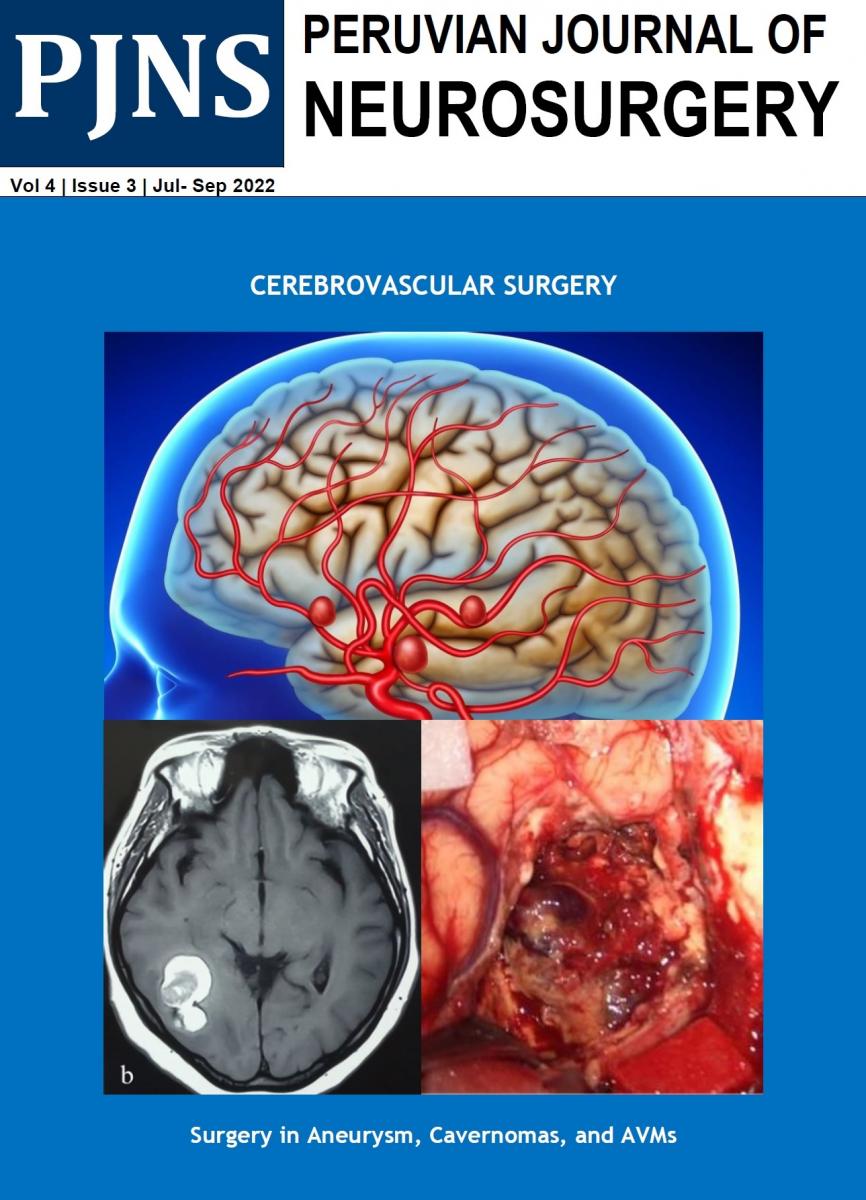Usted está aquí
Peruvian Journal of Neurosurgery
Endovascular management of non-ruptured intracranial aneurysms with flow diverter devices. First experience in Peru.
ABSTRACT
Introduction: Endovascular treatment of non-ruptured intracranial aneurysms with flow diverter devices is a technique that currently has many indications for its use.
Objectives: Determine the clinical characteristics of patients, angiographic characteristics of the aneurysms, occlusion rate at 6 months and 1 year follow-up and complications associated to the deployment of flow diverter devices in the treatment of non-ruptured intracranial aneurysms.
Methods: We present a retrospective review of consecutive cases treated with flow diverters at our institution.
Results: Since October 2012 to April 2017, twenty-one patients were treated with a total of 29 non-ruptured aneurysms. Twenty six aneurysms (90%) were located in the anterior circulation and three aneurysms were located in the posterior circulation (10%). We employed 22 flow diverters (SILK = 9, FRED = 13). Fifty percent of the aneurysms were located in the paraclinoid segment of the internal carotid artery, followed by 28% located in the cavernous segment.
Globally, fifty eight percent of the patients were cured. There were three patients with persistence of the aneurysms and five complications: three carotid thrombosis, one migration and one mal-apposition of the stent. All this complications were and remain asymptomatic. Mortality rate in this series was zero percent.
Discussion: The use of flow diverter devices is a new technique for the treatment of non-ruptured intracranial aneurysms at our institution, with adequate rates of aneurysm occlusion.
Keywords: Intracranial Aneurysm, Stents, Cerebral Angiography. (source: MeSH NLM)



